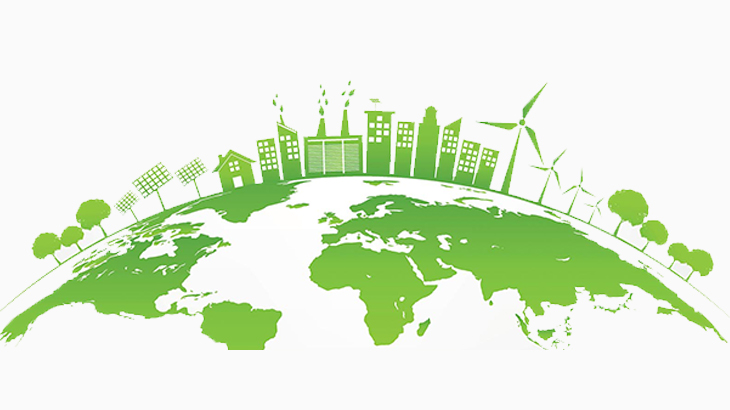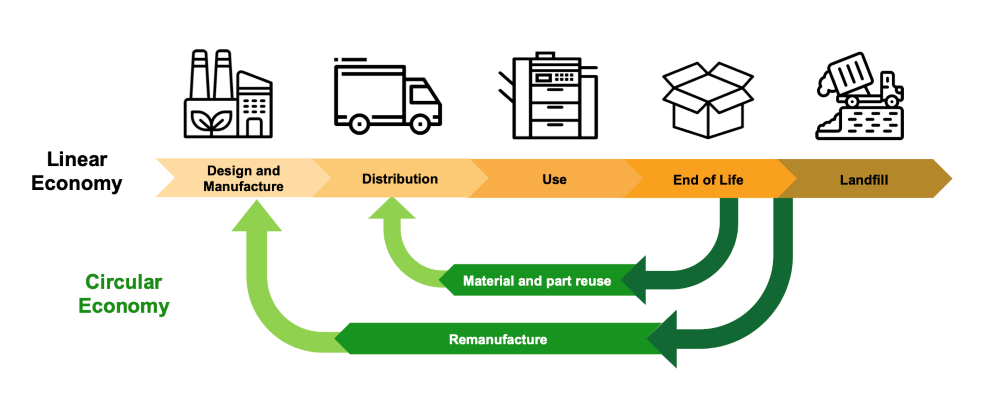Lexmark Blog
Corporate Social Responsibility(CSR)
Embracing the circular economy in tech takes more than recycling
| By John Gagel, Chief Sustainability Officer at Lexmark
Tech manufacturers should select sustainable raw materials and design products for longevity.

TAGS: Corporate Social Responsibility(CSR), Thought Leadership
The year 2021 may see significant advancements on climate change policy across the globe, according to The Brookings Institution. Members of the Paris Agreement are required to announce updated emissions goals prior to the group’s November Conference of the Parties (COP) meeting, and many are likely to include reaching net-zero emissions by 2050. To achieve these ambitious goals, business and industry must be on board, and we as individuals must do our part.
We can start by embracing the circular economy, which entails much more than recycling. Recycling is only one component of a circular economy approach and should be considered only when waste cannot be re-used, remanufactured or repaired. Applying circular economy principles is particularly important when it comes to technology products.

As defined by the Ellen MacArthur Foundation, a circular economy is based on the principles of designing out waste and pollution, keeping products and materials in use, and regenerating natural systems. It is circular because products and materials remain in use for a longer time, having multiple user-cycles through trade-in, repair and recycling. This contrasts with the linear economy of ‘take-make-use once for a relatively short time, dispose, replace’, which uses irreplaceable raw materials and creates unmanageable amounts of waste and pollutants.
The circular opportunity
Beyond climate change, there are compelling reasons for adopting a circular model. Research shows that the circular economy offers a $4.5 trillion economic opportunity by reducing waste, stimulating innovation and creating employment. New business models focused on reuse, repair, remanufacturing and sharing models also offer significant innovation opportunities. As the world starts to slowly emerge from the height of the pandemic, it has been widely reported that global economies could enjoy huge economic boosts if nations abandon their linear approach to materials and resources and fully embrace the circular economy approach and sustainability-led initiatives.
Embracing the circular economy requires a holistic approach from governments and industry, which collectively must move away from the traditional linear, throw away culture. Key to that though, is avoiding waste in the first place. In a circular economy, product manufacturing starts with using only sustainable raw materials and then designs for longevity, which means not only making items to last as long as possible but also making them simple to repair so that the throw-away-and-buy-new culture is minimized. It also designs to enable recycling once components have reached their true point of obsolescence.
Making technology last
The technology industry is particularly noted for its waste as regular updates, upgrades and technology obsolescence means we’re regularly replacing items. While some products last longer than others – monitors for example are typically replaced every 13 years while smartphones are replaced every two years – research has found that electronic products typically last two to three years less than intended when they were designed.
The reality is that many products break down too soon after purchase and then cannot be repaired or recycled. Much responsibility lies with manufacturers that design for single, short-term use with built-in premature obsolescence, instead of designing by circular economy principles.
There is a strong case for building long-lasting products that can then be refitted for the second-hand market by certified repairers or, if no commercially viable repair is possible, broken down into reusable parts. In fact, there is a growing trend toward buying from sustainable brands. According to Kantar, one in five shoppers – and growing – consistently make purchase decisions influenced by their desire to reduce their plastic waste.
The business case for longevity [Heading 1]
Longer lasting products are good for business. This starts with choosing sustainable raw materials for both product manufacture and consumables. Products designed for durability and longevity—such as Lexmark devices that are intentionally designed to last seven years or longer, well beyond the industry average—are a good business investment as uptime is improved by reducing the disruption caused by replacing or introducing new technologies. Circular-designed products also pass on business savings through reduced energy consumption, a longer refresh cycle, and technology features like remote maintenance based on predictive analytics and on-demand servicing to ensure they keep working as long as they should.
The circular economy entails much more than recycling. Designing products and their components to last longer reduces waste and the need to recycle, which can itself use a lot of energy. Society has committed to recycling; now we must commit to making and buying products that are designed to last.
John Gagel is the chief sustainability officer at Lexmark. He is responsible for corporate management of all global sustainability and corporate social responsibility initiatives and strategy development as well as product safety compliance.